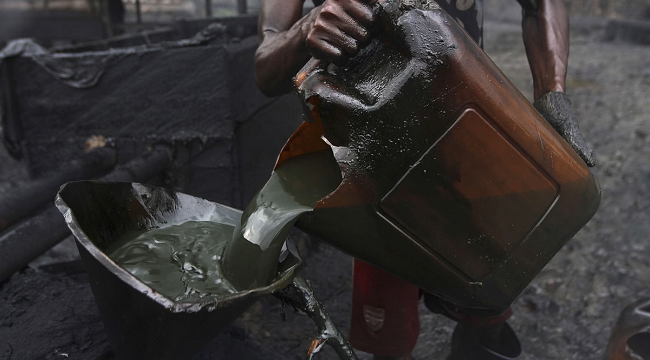The U.S Energy Information Administration (EIA) on Tuesday predicted that Brent crude spot prices could average below $60 per barrel in the fourth quarter, a level not seen since 2020.
A statement by the Agency said its statistical team had cited global supply outpacing demand growth as a key factor behind the expected price drop.
“There’s a lot of uncertainty in the petroleum market,” said EIA Acting Administrator Steve Nally. “We’ve seen significant drops in oil prices when inventories build quickly, which is what we anticipate in the coming months.”
This is as global crude oil tracked by Brent futures has fallen sharply, losing over 7% in August and extending its year-to-date decline to more than 11% in 2025.
The commodity, which opened the month above $71.83 per barrel, is now hovering around $66.09 following the new forecast from the EIA.
Reports also indicate that U.S. crude production could reach a record 13.41 million barrels per day in 2025, driven by gains in well productivity. Analysts warn that rising supply may continue to overshadow demand.
READ ALSO: NSDC Urges Farmers, Investors To Tap Into $2bn Nigerian Sugar Market
Brent, currently around $66 per barrel, is holding above the $60 support level, but a break below it could trigger further selling pressure.
Crude oil started the year at $74.93 per barrel, soaring to $82.03 on January 15, the highest price recorded so far in 2025, before entering a downward trend.
Tariffs contributed to a decline from February through early March, pushing prices below $71 per barrel.
A brief recovery in late March into early April lifted the commodity back to $74, but it plummeted again for the rest of April, hitting a low of $63.12 to close the month.
Prices began to recover in May and remained relatively firm through June, as geopolitical tensions and concerns over potential disruptions from Iran pushed prices higher, a surge that extended into July, reaching $72.
Analysts suggest that forecasts of supply likely surpassing demand in early August may be contributing to the recent selloff, resulting in a drop of over 7%.





